Popp CO Sensor Handleiding
Bekijk gratis de handleiding van Popp CO Sensor (4 pagina’s), behorend tot de categorie Gasmelder. Deze gids werd als nuttig beoordeeld door 99 mensen en kreeg gemiddeld 4.4 sterren uit 50 reviews. Heb je een vraag over Popp CO Sensor of wil je andere gebruikers van dit product iets vragen? Stel een vraag
Pagina 1/4

1
Quick Start
This device is a Z Wave sensor reporting Carbon Monoxide Danger. Pressing the ' utton' for one second - Z-Wave b adds
(includes) and removes (excludes) the device from/to the Z Wave network.-
Please refer to the chapters below for detailed information about all aspects of the product.
CO Detector (EU Version)
Manual
004407

2
Product Description
This product combines a certified carbon monoxide detector with a plug in Z Wave module to form a wirelessly - -
reporting carbon monoxide sensor. The carbon monoxide detector is certified according to EN 50270:1999,
EN 60335 1:1994 as well as EN 50291:2001 and satisfies all contemporary legal requirements.-
The h nd carbon monoxide detector offers a test button conveniently accessible igh-e – e.g. when with a broom stick –
mounted on the ceiling. Three colored LEDs on the device indicate Alarm, Error and Battery Level. The Alarm
conditions as well as the actual CO level measured in ppm are reported wirelessly using Z Wave. Additionally – – - , a
group of actuators can be controlled using the BASIC command class in case the CO alarm triggers. Two configuration
parameters define what command to be sent in this case.
The device is a secure Z Wave Plus device and can be used in one wireless Z Wave network with other certified - -
devices regardless of origin and brand. It supports secure communication if the central controller supports secure
communication as well. Even if included securely the device is able to communicate unsecured with devices included
unsecure using the association group 2. Beside the Carbon monoxide danger alarm the device will also report a
tamper alarm if the sensor is removed from the mounting base.
Installation Guidelines
Please refer to the installation guide of the carbon sensor attached for information
about how and where the carbon monoxide sensor should be installed. Please
note that the carbon monoxide sensor will also work stand one even if no Z-al -
Wa ve network is present.
• The first step is to mount the mounting base on the desired place in the home
using screws.
• Remove the battery isolation strip from the wireless module. The red LED will
start blinking.
• Include the sensor into your existing Z- s h nWave based mart ome etwork
using the Wave buttonZ- .
• Place the detector on the mounting base and turn clockwise. Now the detector
is armed.
• Battery change: The battery of the wireless module will be empty much earlier than the 10 years soldered in
battery of the sensor. To replace the battery, deactivate the tamper alarm via central controller, remove the
detector and pull off the wireless module from the carbon sensor. Then you can replace the 1/2 AA battery and
re- plug the wireless module.
Behavior within the Z- Wave Network
On factory default the device does not belong to any Z Wave network. The device needs to join an existing wireless -
network to communicate with the devices of this network. This process is called . Devices can also leave a Inclusion
network. This process is called Exclusion. The primary controller of the Z Wave network initiates both processes. This -
controller will be turned into exclusion respective inclusion mode. Please refer to your primary controller’s manual on
how to turn your controller into inclusion or exclusion mode. Only if the primary controller is in inclusion or exclusion
mode, this device can join or leave the network. Leaving the network i.e. being excluded sets the device back to - -
factory default.
If the device already belongs to a network, follow the exclusion process before including it in your network. Otherwise
inclusion of this device will fail. If the controller being included was a primary controller, it has to be reset first. Pressing
the Z- bWave utton for one second includes the device. If the button is pressed for at least 2 seconds, the inclusion
will be done without the Security Command Class. A single click on the button will exclude the device.
Operating the Device
There is no defined level of c monoxide that will result in an alarm. The danger of CO is a result of the total level arbon
of CO in the air plus the duration of exposure. Wave alarm will be sent out when one of the following conditions A Z-
were met:
• CO level above 43 ppm for a duration of 60 minutes
• CO level above 80 ppm for a duration of 10 minutes
• CO level above 150 ppm for a duration of 2 minutes

3
The alarm will be sent to the central controller. Additionally the alarm can be used to switch any other Z, -Wave
controllable actuator such as a Switch, a Dimmer or even a Door Lock that is placed in association group 2. The
wireless module will also report a low (wireless module) battery warning and a tamper alarm on and off when the mains
device is place on or removed from the mounting base. Please note that the battery level of the main detectord (10year
battery) is not reported since this battery can’t be replaced anyway.
Note: All communication of the wireless module is performed with application level security if the device was included
securely and all communication partners support secure communication as well. In case a non secure device is -
associated for switching on smoke alarm, the smoke detector will detect this and change its communication style with
this very device to non-secure. This process happens one time and will take about 20 seconds. This delay will happen
on first communication only.
Factory Reset
To do a factory reset press the button on the wireless module for at least 10 seconds. This procedure should Z-Wave
only be used when the primary controller is inoperable.
Firmware Update
Once the firmware update process has started (wakeup first by single push of the Z-Wave button) double click the
Z- Wave button to confirm firmware update process.
Support for Command Class BASIC
The device supports the generic Z Wave command class BASIC. The device will ignore any SET command but return -
the status of the sensor on a GET command (triggered=0xff, idle=0x00).
Alarm Messages
The device will issue the following (unsolicited) alarm messages:
• CO Danger Detected ) (this message will also be issued when the test button is pressed
• Low Battery Alarm (when the battery of the wireless modules goes low)
• Tamper Detected (ON, when the CO detector head is removed from the base; r head is OFF, when the detecto
mounted to the base)
• Malfunction m s (issued, when the detector ain head detect a malfunction of CO detection)
Node Information Frame
The Node Information Frame is the business card of a Z Wave device. It contains information about the device type -
and the technical capabilities. The inclusion and exclusion of the device is confirmed by sending out a Node
Information Frame. Beside this it may be needed for certain network operations to send out a Node Information Frame.
A simple click on the Z-Wave button sends a NIF.
Associations
A Z- - Wave device controls other Z Wave devices. The relationship between one device controlling another device is
called association. In order to control a different device, the controlling device needs to maintain a list of devices that
will receive controlling commands. These lists are called association groups and they are always related to certain
events (e.g. button pressed, sensor triggers, ...). In case the event happens all devices stored in the respective
association recgroup will eive a common wireless command.
Association groups
1
Lifeline (max. nodes 10 in group: )
2
Switching Command when Alarm in group (max. nodes : 10)
Configuration Parameters
Z- Wave products are supposed to work out of the box after inclusion, however certain configuration can adapt the
function better to user needs or unlock further enhanced features.
IMPORTANT: Controllers may only allow configuring signed values. In order to set values in the range 128 … 255 the
value sent in the application value minus 256. For example: to set a parameter to 200 it may be shall be the desired
needed to set 56 = minus 56. In case of a two byte value the same logic applies: Values greater a value of 200 minus 2 -
than 32768 may needed to be given as negative values too.
Product specificaties
| Merk: | Popp |
| Categorie: | Gasmelder |
| Model: | CO Sensor |
| Kleur van het product: | Wit |
| Breedte: | 123 mm |
| Diepte: | 28 mm |
| Hoogte: | 123 mm |
| Gebruikershandleiding: | Ja |
| Stroombron: | Batterij/Accu |
| LED-indicatoren: | Alarm |
| Connectiviteitstechnologie: | Draadloos |
| Levensduur batterij/accu: | 10 jaar |
| Geluidsalarm(en): | Ja |
| Detector type: | Koolmonoxide detector |
| Gedetecteerde typen gas: | Koolstofmonoxide (CO) |
Heb je hulp nodig?
Als je hulp nodig hebt met Popp CO Sensor stel dan hieronder een vraag en andere gebruikers zullen je antwoorden
Handleiding Gasmelder Popp

24 Oktober 2022
Handleiding Gasmelder
- Eminent
- GEV
- Crowcon
- Vemer
- Abus
- Joy-it
- Aeroqual
- Alecto
- Trotec
- Elro
- Sunwind
- Protector
- FireAngel
- Sauermann
- Vimar
Nieuwste handleidingen voor Gasmelder
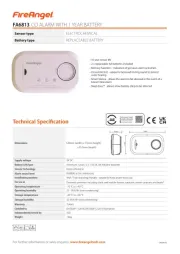
31 Augustus 2025
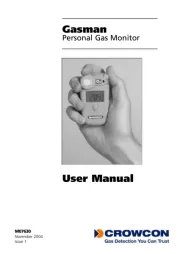
31 Augustus 2025
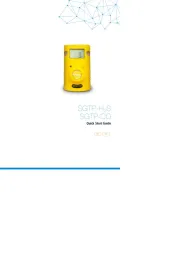
15 Augustus 2025
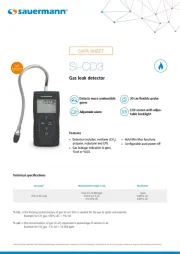
14 Augustus 2025
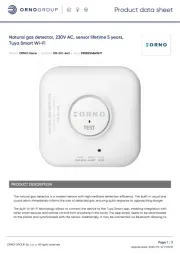
12 Augustus 2025

5 Juli 2025
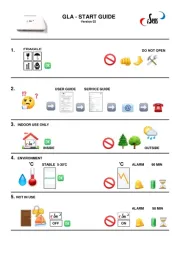
5 Juli 2025
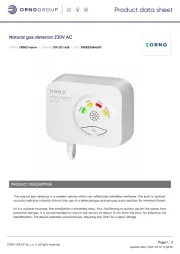
10 Juni 2025

22 Mei 2025
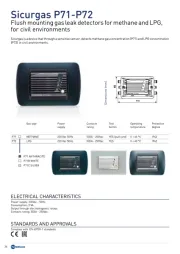
11 Mei 2025